
Everybody’s sort of over the long-as-shit, lotsaskitsandguests rap album, right? It figured itself out, as rappers either avoid it to make short-ish, still-shitty albums while claiming “all hits no skits” or they dig in deep like Lil Wayne, embrace the inherent sloppiness of 70 minutes of music and make a kinda classic.
But the 40 minute album’s weak and most rappers can’t precariously balance art and bullshit like Weezy. And anyway, the Illmatic formula only works when your music sounds like Illmatic, otherwise listeners just kinda feel cheated. A great deal of Clipse’s success for Hell Hath No Fury had to do with its relatively brief length and Common’s Be and Finding Forever hold up because they’re kind of consistent and don’t over stay their welcome. Less “classics” than albums that followed the formula for a classic close enough.
Hath succeeds though because it has scope and a sense of a narrative. Rap albums, more than any other genre, just don’t work as a mess of songs. It doesn’t have to be a perfectly sensible story or arc, but some palpable sense of evolution needs to be in there. If Jeezy’s The Inspiration (which came out a few weeks after Hell) had ended after track 11, “Dreamin”, it’d be as resonant and palpable as Clipse’s second album.
Making a good album, in that like Platonic way music critics gravitate toward isn’t all that hard (it’s basically a formula), but most rappers aren’t even interested in that and we’re left with a bunch of too-long, not that great albums or mercifully short but still sloppy 40 minutes. This past year, something like Q-Tip’s The Renaissance, sounds like Tip grabbed the best songs from a larger group he’s been working on for the past 9 years and sequenced them to flow together well enough. It’s not a bad album, it’s not great, and it’s a got a couple of classics on it, but I don’t know–I expect more?
Albums like this are, at their best polite, modest compilations of music and nothing more. For example, Pastor Troy’s Attitude Adjuster isn’t really better or worse than The Renaissance and if you dig aggressive, affecting enough kinda Crunk, of course it’s way better. Musically, they don’t have a lot in common, but both discs are equal parts fun and frustrating for short durations and diminishing returns.
Pastor and Tip should’ve just stuck another twenty minutes of music on there; they weren’t making anything that justified the short length anymore than they could justify filling out a whole CD. Or, these moderately successful albums could’ve just been chopped down fifteen minutes and become excellent EPs.
The EP format’s never been as integral in hip-hop as it has other genres, but there are plenty of classics rap EPs–100 Miles and Runnin, California Livin, All Souled Out, Creepin On Ah Come Up to name a few personal favorites—and it’s always seemed like an ideal way to introduce listeners without overwhelming them, an all-too common problem when your first introduction to a rapper’s his long-ass mixtape or his totally-compromised, delayed a million times album.
For veterans that have a fervent fanbase (like Q-Tip or Pastor Troy), dropping half-assed mixtapes for free doesn’t make as much sense as dropping half-assed albums for 12 dollars. But they’re not really touching anybody in a new way sonically or commercially–and maybe they aren’t trying to–but only all-out stans would feel totally satisfied by these albums.
The EP makes a really cool end-run around the album for artists like Q-Tip who clearly aren’t totally sure where to go or what to do right now and Pastor Troy, who drops one, sometimes two albums a year that half-work and are half worthless. In a way, the mixtape’s made an end-run around some of the problems with the “album” but we’ve hit this weird breaking point for mixtapes.
Because they don’t cost anything and we don’t expect much from them, it’s silly to bitch about a mixtape’s quality unless it’s like, a Lil Wayne or Clipse tape, so we just download them, digest them, and move on. They both mean a lot and mean absolutely nothing and it’s mainly the artists losing out. Artists that, because they’re major label album’s forever in-limbo or they’ve got blog hype and no contract, are entirely dependent upon the mixtape to stay above water.
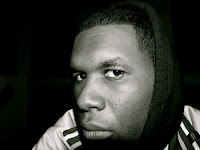 For new or in-limbo artists, a solid, easy to digest product that would sell for a few bucks cheaper and still doesn’t curtail the necessary “debut album” seems like a better option. As Jay Electronica’s shown, not really playing the “mixtapes, rap on others’ beats” game can work better than being another guy with a ton of mixtapes going buck over “A Milli”. Jay’s earliest hype came from his Style Wars EP, which at 12 songs, all of them originals, could’ve been called an “album” or at least, a “mixtape”.
For new or in-limbo artists, a solid, easy to digest product that would sell for a few bucks cheaper and still doesn’t curtail the necessary “debut album” seems like a better option. As Jay Electronica’s shown, not really playing the “mixtapes, rap on others’ beats” game can work better than being another guy with a ton of mixtapes going buck over “A Milli”. Jay’s earliest hype came from his Style Wars EP, which at 12 songs, all of them originals, could’ve been called an “album” or at least, a “mixtape”.
Calling it an EP suggested a cohesion and signficance greater than DJ So-and-So Presents… but still built-in hype for his formal debut (which we’re still waiting for). The brilliance of the EP is that it suggests “this isn’t important” which, in the current world of rap–where a snippets of a single get leaked and people drop trailers for their fucking music videos–is refreshing in its anti-hype.
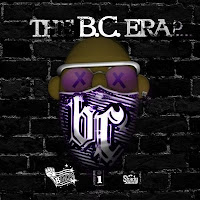 SHADY records-signed Bobby Creekwater released an EP on his MySpace last year called The BC Era and listening to it was both invigorating (it’s nine solid, guest-less tracks of rapping) and depressing (because if Bobby ever drops an album it’ll have crossover beats and guests and run closer to 18 tracks). Bobby Creek’s always impressed me more than most languishing in label limbo rappers, but BC Era shows he can make a solid collection of songs without hiding behind the “mixtape” label.
SHADY records-signed Bobby Creekwater released an EP on his MySpace last year called The BC Era and listening to it was both invigorating (it’s nine solid, guest-less tracks of rapping) and depressing (because if Bobby ever drops an album it’ll have crossover beats and guests and run closer to 18 tracks). Bobby Creek’s always impressed me more than most languishing in label limbo rappers, but BC Era shows he can make a solid collection of songs without hiding behind the “mixtape” label.
The stumbling psychedelia of “Clouds” is a proper intro and “Goodbye” is the right way to end an album—with one last explosion of energy and some vague sense of wrapping-it-up melancholy. In between, there’s a track like “When I Go” which references “A Milli” through the beat’s minimalism and Creekwater’s cadences and is in a sense, his “freestyle” on the mega-hit without him just being the 1000th dude to plain rap over it. It isn’t overt and isn’t aggressive, but it invokes the subtler ways rappers of the 90s addressed over-arching rap trends amongst one another before it was cool to just rap over dude’s beat about how you outrapped him on the track wherein you’re supposedly outrapping him…
For unknown rappers too, the EP’s a great idea as it’s equal parts overwhelming and underwhelming like a mixtape and again, doesn’t force them to blow their big-time “debut” album load as soon as possible. Some of my favorite releases of 2008 turned out to be EPs from Baltimore rappers that were no-bullshit bursts of rap clocking in between twenty and thirty minutes.
 B.O.M.B released his EP Testers in the spring and like BC Era, gives you a group of great songs and some palpable sense of scope. Demon synths and trebly horns squeak out from the titular intro track through the next nine songs, with brief detours for the rolling pop-rap of “Lean” or club-ready jams mixed with a Ghostface/Dolemite storytelling detail on “She’s Nasty” and it all lets-up for the perfect closer “Sunday”, a decidedly relaxed celebration of his hometown. Imagine the average rapper’s grabs for versatility, smooshed into nine cohesive tracks, not stretched to twenty.
B.O.M.B released his EP Testers in the spring and like BC Era, gives you a group of great songs and some palpable sense of scope. Demon synths and trebly horns squeak out from the titular intro track through the next nine songs, with brief detours for the rolling pop-rap of “Lean” or club-ready jams mixed with a Ghostface/Dolemite storytelling detail on “She’s Nasty” and it all lets-up for the perfect closer “Sunday”, a decidedly relaxed celebration of his hometown. Imagine the average rapper’s grabs for versatility, smooshed into nine cohesive tracks, not stretched to twenty.
 MANIA Music Group’s Midas and Kane Mayfield each released super-solid, thematically cohesive EPs for free on their website. Midas’ Live from the Arcade, based around the propulsive, video-game themed “Push Start” is a quick portrait of a rapper that straddles the line of nerdy thoughtful sometimes wounded rapper (“Blue Lights” “You’re Fired”), and guy ready to kick your ass (“Brass Knuckles”) and call you a cunt (“Set’em Straight Skit”). It’s a concept and sincere gimmick that dude can easily stretch into a proper full-length when the times comes and part of that confidences comes from his comfort in not taking seventy minutes to prove it. On the Prelude to Bladerunner EP, Kane’s almost always ready to kick your ass and call you a cunt, but he wraps it all around a dystopian aesthetic of garbage can drums and future electronics.
MANIA Music Group’s Midas and Kane Mayfield each released super-solid, thematically cohesive EPs for free on their website. Midas’ Live from the Arcade, based around the propulsive, video-game themed “Push Start” is a quick portrait of a rapper that straddles the line of nerdy thoughtful sometimes wounded rapper (“Blue Lights” “You’re Fired”), and guy ready to kick your ass (“Brass Knuckles”) and call you a cunt (“Set’em Straight Skit”). It’s a concept and sincere gimmick that dude can easily stretch into a proper full-length when the times comes and part of that confidences comes from his comfort in not taking seventy minutes to prove it. On the Prelude to Bladerunner EP, Kane’s almost always ready to kick your ass and call you a cunt, but he wraps it all around a dystopian aesthetic of garbage can drums and future electronics.
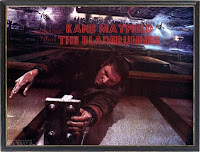 Although record sales show I’m kinda maybe alone on this, when I hear something perfect like The BC Era or Live from the Arcade, I want to own it. And I’m more apt to pay 10 dollars for something that’s really hot than 15 dollars for something that’s part hot and part boner-kill. Additionally, the EP is marketable as an LP which most rap records—almost always 2xLPs– are not. While the market’s not exactly huge, the “vinyl resurgence” has been documented in quite a few places lately and I like to walk around pretending that rap heads in particular, still care about vinyl outside of their Serato.
Although record sales show I’m kinda maybe alone on this, when I hear something perfect like The BC Era or Live from the Arcade, I want to own it. And I’m more apt to pay 10 dollars for something that’s really hot than 15 dollars for something that’s part hot and part boner-kill. Additionally, the EP is marketable as an LP which most rap records—almost always 2xLPs– are not. While the market’s not exactly huge, the “vinyl resurgence” has been documented in quite a few places lately and I like to walk around pretending that rap heads in particular, still care about vinyl outside of their Serato.
Just today, I was in a record store and heard a guy asking for the new Animal Collective “on vinyl”. Make jokes about how he got his record player from Urban Outfitters last week or how “vinyl” is real hip right now, but the other part is, a record offers you something really cool and personal that CD’s don’t and even this dope knows that. Now that you can download something and burn it or stick it on your iPod and drive around and the only thing lost is like, a little audio quality, a record’s got levels of “retro” and sincere appeal.
I can’t think of anything more exciting than having The BC Era or Jay Electronica’s Style Wars and “Act I: The Pledge” on record, or you know, a version of The Renaissance without “Manwomanboogie”, “Dance on Glass”, and “Life is Better” on it.
-The BC Era is available for free at Bobby Creekwater’s MySpace
-Testers is available for purchase at CDBaby
-Live from the Arcade and Prelude to Bladerunner are available for free at MANIA Music’s Website



 For new or in-limbo artists, a solid, easy to digest product that would sell for a few bucks cheaper and still doesn’t curtail the necessary “debut album” seems like a better option. As Jay Electronica’s shown, not really playing the “mixtapes, rap on others’ beats” game can work better than being another guy with a ton of mixtapes going buck over “A Milli”. Jay’s earliest hype came from his Style Wars EP, which at 12 songs, all of them originals, could’ve been called an “album” or at least, a “mixtape”.
For new or in-limbo artists, a solid, easy to digest product that would sell for a few bucks cheaper and still doesn’t curtail the necessary “debut album” seems like a better option. As Jay Electronica’s shown, not really playing the “mixtapes, rap on others’ beats” game can work better than being another guy with a ton of mixtapes going buck over “A Milli”. Jay’s earliest hype came from his Style Wars EP, which at 12 songs, all of them originals, could’ve been called an “album” or at least, a “mixtape”. SHADY records-signed Bobby Creekwater released an EP on his MySpace last year called The BC Era and listening to it was both invigorating (it’s nine solid, guest-less tracks of rapping) and depressing (because if Bobby ever drops an album it’ll have crossover beats and guests and run closer to 18 tracks). Bobby Creek’s always impressed me more than most languishing in label limbo rappers, but BC Era shows he can make a solid collection of songs without hiding behind the “mixtape” label.
SHADY records-signed Bobby Creekwater released an EP on his MySpace last year called The BC Era and listening to it was both invigorating (it’s nine solid, guest-less tracks of rapping) and depressing (because if Bobby ever drops an album it’ll have crossover beats and guests and run closer to 18 tracks). Bobby Creek’s always impressed me more than most languishing in label limbo rappers, but BC Era shows he can make a solid collection of songs without hiding behind the “mixtape” label. B.O.M.B released his EP Testers in the spring and like BC Era, gives you a group of great songs and some palpable sense of scope. Demon synths and trebly horns squeak out from the titular intro track through the next nine songs, with brief detours for the rolling pop-rap of “Lean” or club-ready jams mixed with a Ghostface/Dolemite storytelling detail on “She’s Nasty” and it all lets-up for the perfect closer “Sunday”, a decidedly relaxed celebration of his hometown. Imagine the average rapper’s grabs for versatility, smooshed into nine cohesive tracks, not stretched to twenty.
B.O.M.B released his EP Testers in the spring and like BC Era, gives you a group of great songs and some palpable sense of scope. Demon synths and trebly horns squeak out from the titular intro track through the next nine songs, with brief detours for the rolling pop-rap of “Lean” or club-ready jams mixed with a Ghostface/Dolemite storytelling detail on “She’s Nasty” and it all lets-up for the perfect closer “Sunday”, a decidedly relaxed celebration of his hometown. Imagine the average rapper’s grabs for versatility, smooshed into nine cohesive tracks, not stretched to twenty. MANIA Music Group’s Midas and Kane Mayfield each released super-solid, thematically cohesive EPs for free on their website. Midas’ Live from the Arcade, based around the propulsive, video-game themed “Push Start” is a quick portrait of a rapper that straddles the line of nerdy thoughtful sometimes wounded rapper (“Blue Lights” “You’re Fired”), and guy ready to kick your ass (“Brass Knuckles”) and call you a cunt (“Set’em Straight Skit”). It’s a concept and sincere gimmick that dude can easily stretch into a proper full-length when the times comes and part of that confidences comes from his comfort in not taking seventy minutes to prove it. On the Prelude to Bladerunner EP, Kane’s almost always ready to kick your ass and call you a cunt, but he wraps it all around a dystopian aesthetic of garbage can drums and future electronics.
MANIA Music Group’s Midas and Kane Mayfield each released super-solid, thematically cohesive EPs for free on their website. Midas’ Live from the Arcade, based around the propulsive, video-game themed “Push Start” is a quick portrait of a rapper that straddles the line of nerdy thoughtful sometimes wounded rapper (“Blue Lights” “You’re Fired”), and guy ready to kick your ass (“Brass Knuckles”) and call you a cunt (“Set’em Straight Skit”). It’s a concept and sincere gimmick that dude can easily stretch into a proper full-length when the times comes and part of that confidences comes from his comfort in not taking seventy minutes to prove it. On the Prelude to Bladerunner EP, Kane’s almost always ready to kick your ass and call you a cunt, but he wraps it all around a dystopian aesthetic of garbage can drums and future electronics. Although record sales show I’m kinda maybe alone on this, when I hear something perfect like The BC Era or Live from the Arcade, I want to own it. And I’m more apt to pay 10 dollars for something that’s really hot than 15 dollars for something that’s part hot and part boner-kill. Additionally, the EP is marketable as an LP which most rap records—almost always 2xLPs– are not. While the market’s not exactly huge, the “vinyl resurgence” has been documented in quite a few places lately and I like to walk around pretending that rap heads in particular, still care about vinyl outside of their Serato.
Although record sales show I’m kinda maybe alone on this, when I hear something perfect like The BC Era or Live from the Arcade, I want to own it. And I’m more apt to pay 10 dollars for something that’s really hot than 15 dollars for something that’s part hot and part boner-kill. Additionally, the EP is marketable as an LP which most rap records—almost always 2xLPs– are not. While the market’s not exactly huge, the “vinyl resurgence” has been documented in quite a few places lately and I like to walk around pretending that rap heads in particular, still care about vinyl outside of their Serato. Village Voice’s Pazz & Jop is up. If you love lists, there’s plenty of them here and that’s what makes it so fun to read. Even as the Top 10-ers are fairly predictable–as they should be, the list’s supposed to find common ground–you can view every voter’s list and stumble upon some song or album you dismissed or didn’t know existed. My ballot’s below:
Village Voice’s Pazz & Jop is up. If you love lists, there’s plenty of them here and that’s what makes it so fun to read. Even as the Top 10-ers are fairly predictable–as they should be, the list’s supposed to find common ground–you can view every voter’s list and stumble upon some song or album you dismissed or didn’t know existed. My ballot’s below: My first time contributing to the City Paper’s music blog “Noise”. I’ve been polite about it by not complaining before, but really, I wish they’d get my last name right. Either way, this is a really cool and weird record, whatever your opinions on MAD DECENT are, you should check it out.
My first time contributing to the City Paper’s music blog “Noise”. I’ve been polite about it by not complaining before, but really, I wish they’d get my last name right. Either way, this is a really cool and weird record, whatever your opinions on MAD DECENT are, you should check it out. More than a multi-racial sea of exuberant Obama supporters standing proud (or just as appropriately wilding out), more than John Lewis’ pensive cameo, more than just the existence of this epic victory lap rap from Young Jeezy, it’s the about-to-cry sincerity of Bun B’s face that makes the “My President” video.
More than a multi-racial sea of exuberant Obama supporters standing proud (or just as appropriately wilding out), more than John Lewis’ pensive cameo, more than just the existence of this epic victory lap rap from Young Jeezy, it’s the about-to-cry sincerity of Bun B’s face that makes the “My President” video.

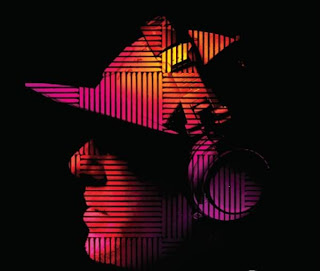 As “spastic” or “hurried” as Baltimore Club can be, it still generally conforms to some kind of dance music structure (build-up, a breakdown, call and response, you know the deal) and it no doubt, does a whole lot within that structure (fart sounds, out of nowhere like sub-break beats, some Klaus Schulze-level of transcendent synth line) but Scottie B’s remix of Kanye West’s “I Wonder” from DJ Benzi, Kanye West, Plain Pat, George Bush, your mom, and Rue Mclanahan present The Sky High Mixtape does whatever it wants. Even someone with ears totally accustomed to Baltimore Club will have a hard time making sense of or predicting where this one’s headed.
As “spastic” or “hurried” as Baltimore Club can be, it still generally conforms to some kind of dance music structure (build-up, a breakdown, call and response, you know the deal) and it no doubt, does a whole lot within that structure (fart sounds, out of nowhere like sub-break beats, some Klaus Schulze-level of transcendent synth line) but Scottie B’s remix of Kanye West’s “I Wonder” from DJ Benzi, Kanye West, Plain Pat, George Bush, your mom, and Rue Mclanahan present The Sky High Mixtape does whatever it wants. Even someone with ears totally accustomed to Baltimore Club will have a hard time making sense of or predicting where this one’s headed.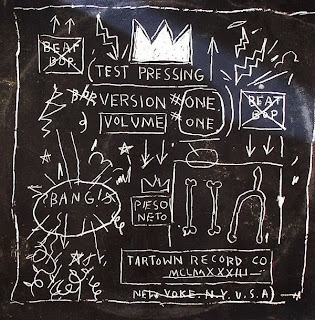 The “difference” between say, Rammellzee or Fab 5 Freddie hanging out with Bruno Bischofberger or showing up at No-Wave shows and Jay-Z rapping with a Santogold hook or Jim Jones rapping over MGMT is deeper and sadder than Noz’s point that once, “those hipsters went uptown for coolness. Those rappers went downtown for money and exposure” and now it’s the other way around.
The “difference” between say, Rammellzee or Fab 5 Freddie hanging out with Bruno Bischofberger or showing up at No-Wave shows and Jay-Z rapping with a Santogold hook or Jim Jones rapping over MGMT is deeper and sadder than Noz’s point that once, “those hipsters went uptown for coolness. Those rappers went downtown for money and exposure” and now it’s the other way around..jpg) Over a beat that turned the glossy synth-funk of Mtume into something glossier and funkier as only Puffy and pals could do, Biggie dedicates “Juicy” to “all the teachers that told me I’d never amount to nothing…to all the people that lived above the buildings that I was hustling from that called the police on me when I was just trying to make some money to feed my daughter, and all the niggas in the struggle” and then, raps a bittersweet song of big-time success, minor victories, and hazy hip-hop memories. The joy, the pain, and all that stuff’s palpable and it’s still pop enough for the radio!
Over a beat that turned the glossy synth-funk of Mtume into something glossier and funkier as only Puffy and pals could do, Biggie dedicates “Juicy” to “all the teachers that told me I’d never amount to nothing…to all the people that lived above the buildings that I was hustling from that called the police on me when I was just trying to make some money to feed my daughter, and all the niggas in the struggle” and then, raps a bittersweet song of big-time success, minor victories, and hazy hip-hop memories. The joy, the pain, and all that stuff’s palpable and it’s still pop enough for the radio!